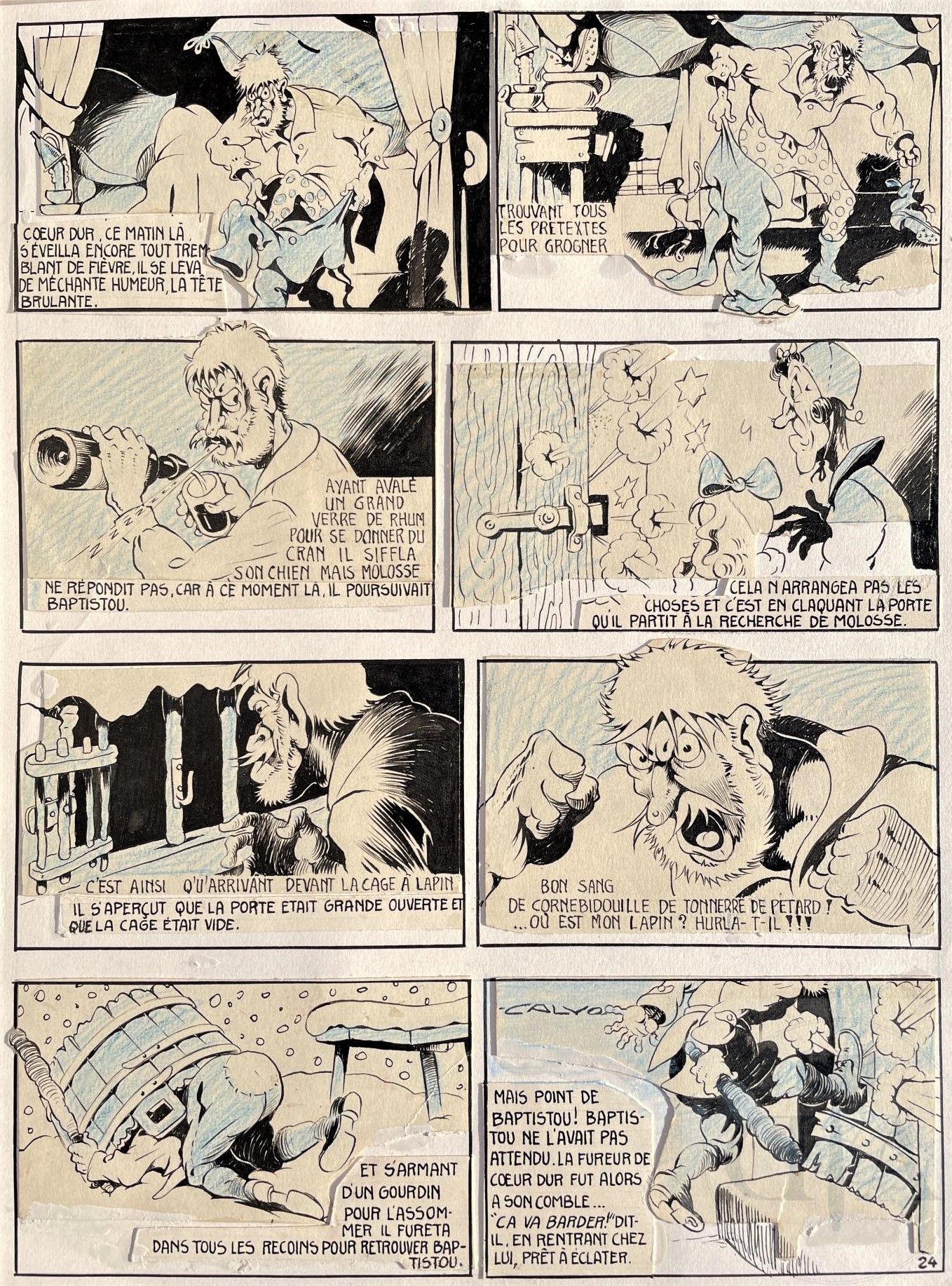Description
Calvo/Baptistou the intrepid little hare. Original plate reassembled #24 illustrating the hunter "Coeur Dur" who gets up in a very bad mood because Baptistou is escaped ... Quality work that illustrates the technical mastery of the master of Uderzo. Rare collector's item. India ink and blue pencil circa 1955. Signed. TBE. 23 X 30 cm Edmond François Calvo alias Calvo (1892-1957) is a French author and cartoonist. He began to draw for the press, especially as a caricaturist at the Canard enchainé between 1919 and 1921. In 1938, he separates from his inn and decides to launch himself full time in the illustration and the comic strip. His most famous album, La bête est morte, which tells the story of the Second World War transposed into an animal world, was published in 1944. The great success of this work led Walt Disney to contact him and ask him to work for his studios, which he refused. From 1942 to 1958, Calvo created fourteen different series, including Rosalie, Patamousse, Coquin le petit cocker, Cricri Souris d'appartement, which gave its name to Cricri journal and prefigured, with his accomplice the cat Matou, his most famous series Moustache et Trottinette, published from 1953 in the women's magazine Femmes d'aujourd'hui. His round and dynamic line was influenced by Walt Disney's. In addition to being an outstanding draftsman, he is also recognized in the world of comics as the master of the young Albert Uderzo who came, in his youth, to visit him at his home to watch him draw and get his advice.
461
Online
Calvo/Baptistou the intrepid little hare. Original plate reassembled #24 illustrating the hunter "Coeur Dur" who gets up in a very bad mood because Baptistou is escaped ... Quality work that illustrates the technical mastery of the master of Uderzo. Rare collector's item. India ink and blue pencil circa 1955. Signed. TBE. 23 X 30 cm Edmond François Calvo alias Calvo (1892-1957) is a French author and cartoonist. He began to draw for the press, especially as a caricaturist at the Canard enchainé between 1919 and 1921. In 1938, he separates from his inn and decides to launch himself full time in the illustration and the comic strip. His most famous album, La bête est morte, which tells the story of the Second World War transposed into an animal world, was published in 1944. The great success of this work led Walt Disney to contact him and ask him to work for his studios, which he refused. From 1942 to 1958, Calvo created fourteen different series, including Rosalie, Patamousse, Coquin le petit cocker, Cricri Souris d'appartement, which gave its name to Cricri journal and prefigured, with his accomplice the cat Matou, his most famous series Moustache et Trottinette, published from 1953 in the women's magazine Femmes d'aujourd'hui. His round and dynamic line was influenced by Walt Disney's. In addition to being an outstanding draftsman, he is also recognized in the world of comics as the master of the young Albert Uderzo who came, in his youth, to visit him at his home to watch him draw and get his advice.
You may also like
